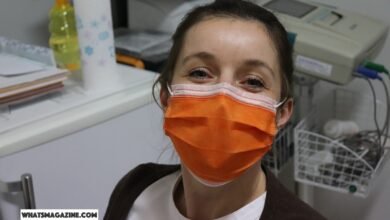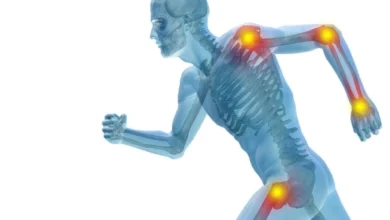The environment of the workplace is one of the primary requirements for workers to perform better. In the healthcare system, the workplace environment matters even more, given its challenges and nature.
Since continuous exposure to emergencies deteriorates the morale and energy of workers, an unsafe and non-supportive environment further hampers their capability.
More than that, a safer environment in the healthcare facility is crucial to looking after patients with care and quality. A risk-free and supportive environment is also necessary to reduce healthcare expenses for both patients and workers.
As such, a responsive environment can readily identify performance-hampering factors and assist the workforce accordingly. It also prevents workers’ exhaustion and helps them carry out tiring responsibilities effortlessly by simplifying their duties.
In essence, the hospital environment is the reflection of how it treats service quality and end-users. Hence, a safe and supportive environment goes beyond mere healthcare provision to patients. Such a crucial responsibility falls on the shoulders of the hospital’s administration, given its managing, directing, and assisting role.
The following sections explore some of the ways the administration can instill safety and support in a healthcare facility.
In this article
1. Encourage interaction and collaboration
As the saying goes, sharing is caring. Interaction and collaboration have a prominent partaking in creating a supportive and safer workplace environment. These characteristics are part of a comprehensive organizational framework that helps facilities run efficiently.
First of all, having qualified administrative leadership is fundamental to directing and managing the operations of the healthcare facility smoothly. That is why hospitals invest time and resources in identifying and recruiting the best talent for such influential positions.
As such, individuals with a Doctor of Education (EDD) possess relevant knowledge of leadership and administration. Specifically, online education programs prepare them for the real-world challenges of the evolving professions.
It is how executives can assist, direct, and administer staff and maintain coordination within a hospital. Their supportive role also encourages workers to open up about challenges in the workplace.
Most importantly, their facilitation to improve interaction and collaboration helps workers attain work-life balance. Hence, workers feel acknowledged and worthwhile for their efforts.
2. Follow standard conventions
At present, the workplace environment is one of the fundamental factors in the organizational blueprint and planning to ensure productivity. It is why several organizational theories and relevant research work also deliberate on improving the workplace environment.
The outcome of such efforts is that every organization has specific standards of practice, given their commercial nature. It means the healthcare system also works under particular guidelines.
Thus following relevant healthcare protocols is necessary for the hospital’s administration to instil and improve safety and support.
For instance, ensuring healthcare staff does not contract diseases while carrying out their duties should be one of the principal responsibilities of the healthcare facility. Recruiting staff as per the work pressure is necessary to prevent burnout in workers.
Encouraging staff to follow safety measures is essential for them to perform healthily and actively. But first of all, supporting them with needed protective gear is crucial.
Similarly, vaccinating or equipping them with safety guidelines is necessary to help them stay fit during breakouts and pandemics.
In essence, the more comprehensive and inclusive such measures and their practice, the more healthily workforce serves patients and the hospital.
3. Arrange practical training
No doubt, engaging in practice is the best approach to ensure the efficacy of any safety protocol or guideline. Similarly, since awareness enhances preparedness, training helps workers acquire proficiency in managing uncertain and challenging situations.
Unless the workforce is practically involved in safety workshops and training, guidelines cannot ensure their readiness. Hence, arranging training is even more crucial for occupations that expose their workers to a higher number of risks, such as healthcare.
Likewise, the rapid evolution of risks in such occupations and how to cope with them is another reason why training is crucial. Otherwise, the workforce is also less likely to respond promptly and maintain their safety in crises.
Additionally, since healthcare activities require collaboration and coordination, such drills can help workers acquire proficiency during practical exertion.
As such, training will minimize the knowledge gap and help workers understand and assist each other readily. Thus workers can keep up with the workplace demands and continue to serve productively.
In essence, training is essential to foster resilience in workers. As a result, they can deal with the emotional, physical, and psychological turmoil more effectively.
4. Make consultation a part of policies
Minimizing safety hazards and providing support to workers necessitates clarification of these concerns. This is because the definition of safety and support can vary among different workers.
It can also vary from workplace to workplace and even among different circumstances. Eventually, the diversity of these requirements complicates the addressing mechanism.
Addressing and responding to such a variety is challenging unless inviting those affected in discussions. Thus, first of all, it is vital to categorize what and when matters to whom. Otherwise, policies are never holistic and reflective without the input of primary subjects.
More specifically, centralized decisions can create unreflective policies. It means consultation adds variety and inclusivity to policies. It is members’ input that should guide the structure and purpose of policies.
Most importantly, the input should also be reflected in practice. Otherwise, policies are not valuable. As such, workers do not receive attention for their suffering from workplace harassment even when there are addressing policies.
To sum up, administrators should enquire about worries and problems faced by employees and incorporate the same in workplace policies. In contrast, documenting does not depart a sense of protection and support compared to the implementation.
5. Augment and upgrade manual support
Human efforts may fall short in ensuring everyone is performing in parallel and also receiving undivided attention. In such cases, the assistance and facilitation of information and technology systems can substitute as an unhindered backup.
Similarly, since executives and administrators cannot be everywhere, collaboration with technology can facilitate workers.
As such, healthcare facilities with automatic sanitizing machines minimize workers’ contact with pathogens and their workload simultaneously. As a result, workers can carry out their activities in a safer environment.
Likewise, robotic machines can help workers transport stuff to and from susceptible places, reducing the likelihood of acquiring infections while dealing with infected areas and patients.
Automatic machines are also effective support systems to cater to mundane activities, such as maintaining, organizing, and updating inventory. Thus workers can reserve their energy for more demanding work.
Even more, these tools also facilitate diagnosis, treatment procedures, and patient monitoring as well. In return, hospitals can utilize their workforce for activities that necessitate human involvement, such as patient consultation, rehabilitation, and nursing.
In essence, having such constant and unwavering support, regardless of the circumstances, promotes the safety and support of the workplace environment.
Conclusion
No doubt, challenges are intrinsic, constant, and inescapable parts of the healthcare occupation. This is why maintaining the physical and psychological needs of the service providers and receivers is also challenging.
In such cases, hospitals can only exploit variables that can contribute to minimizing the risks. Thus improving safety and support in the hospital environment addresses such concerns.









